|
October 18th, 2010
利尻昆布漁
今年は天候に恵まれず、昆布漁が少なかった。
7月中旬から始まった昆布漁。
海が凪ぎても、雨・霧。
晴れても時化る海。
晴天と凪の組み合わせが少なかった。
明日は昆布採りになるかも、で、朝3時頃から起きている漁師。
昆布かウニ漁かは、朝に決まる。
天気予報しながら、昆布の製品化で夜遅くまで作業。
夏は、体力と気合との勝負と、漁師が言っていた。
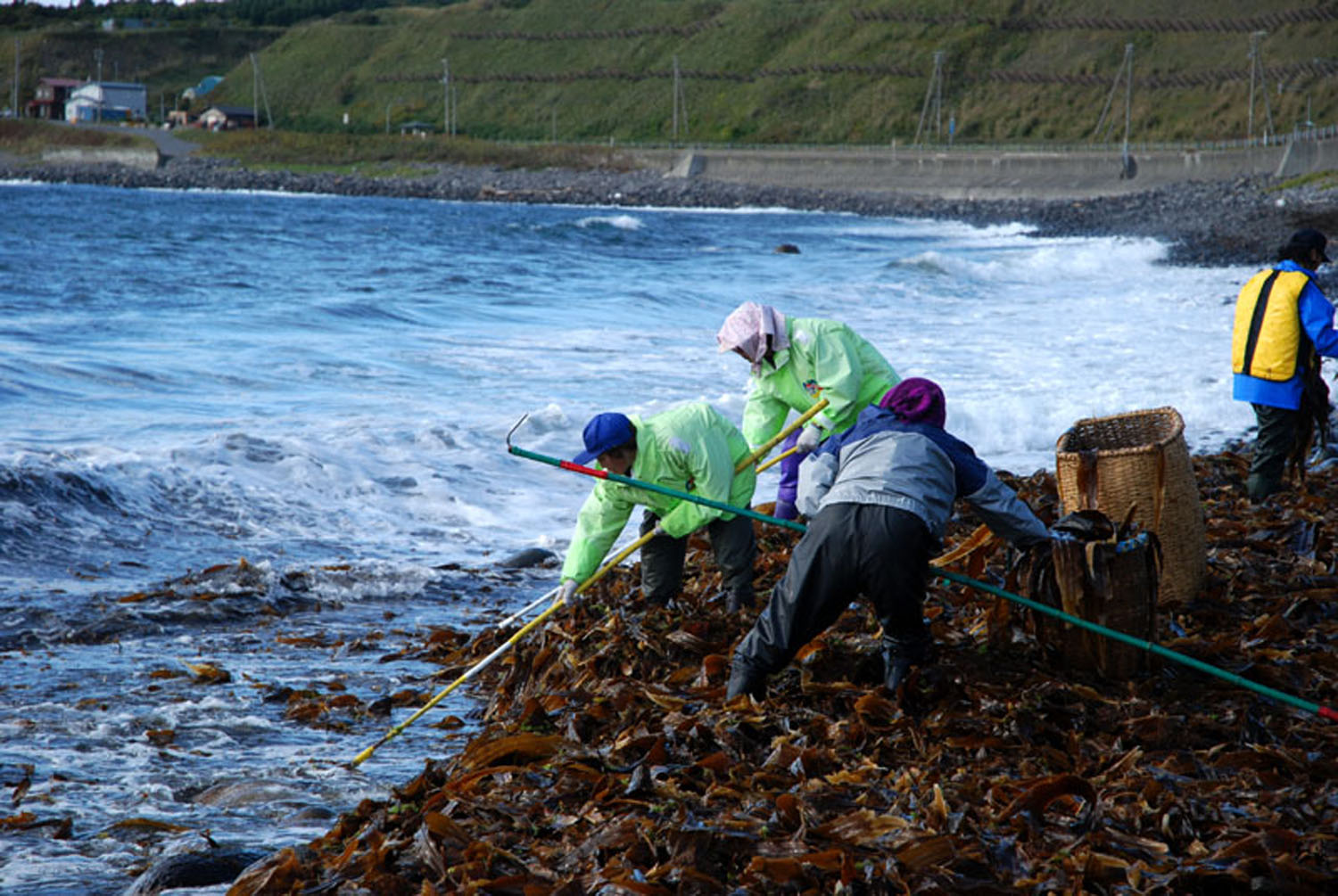 Harvesting Konbu. (Photo by E. Nishiya.) Harvesting Konbu. (Photo by E. Nishiya.)
Every autumn the strong winds and the ocean waves bring “Rishiri konbu” to the shores. The competition among the fishermen (and fisherwomen) is fierce.
You’ve got to gather better and more konbu than the others!
The hearty men and women of Rishiri go out to the ocean and to the beaches,
oblivious to the blustery fall weather.
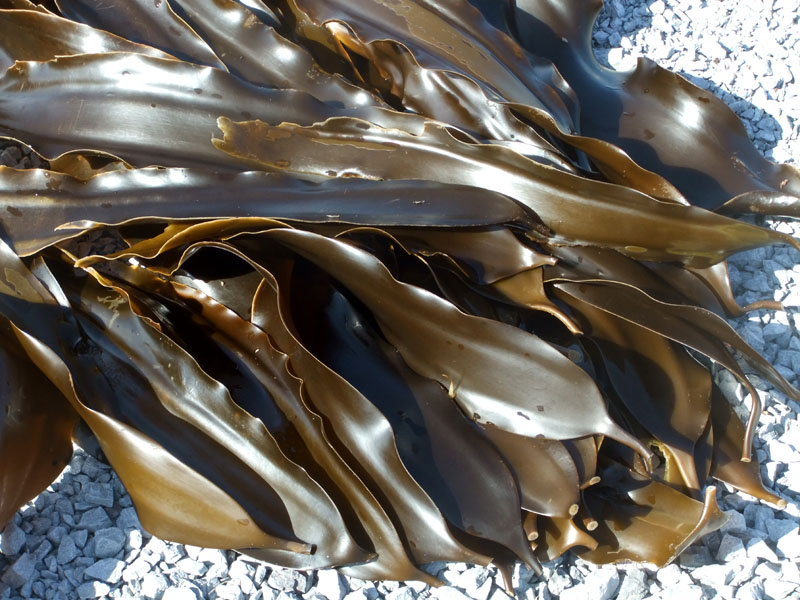
Rishiri Island konbu is reputed to be the best-tasting konbu in Japan!
Posted in Uncategorized | Comments Off on Rishiri Island in the Autumn
October 14th, 2010
ラナルド・マクドナルドは1824年、毛皮交易商のスコットランド人の父と、アメリカ先住民の母との間に生まれる。出身はアメリカオレゴン州アストリア。幼いころから日本に対して強い興味があり日本へ渡る。今では、日本で最初のネイティブ英語教師として知られている。
1848年、当時24歳のマクドナルドは遭難を偽装し当時鎖国中であった日本への入国を果たし、北海道の焼尻島へ上陸した後、利尻島へ上陸した。この利尻 島でアイヌ人とともに数日間暮らした後、密入国の疑いで長崎に送られ拘禁されたが、彼の誠実な人柄と高い教養が認められ、徳川幕府から、西山郷に英語教室 開設を許可されている。ここで、アメリカへ送還されるまでの半年間の間、出島で働く14人のオランダ通詞たちに英語を教えたとされている。マクドナルドが 来日する以前は、オランダ語を経由せず直接的に英語を教える講師はいなかったので、彼が初の英語教師となった。教え子の中には、ペリーとの交渉で活躍したことで有名な森山栄之助などがいる。またマクドナルド自身も日本への関心から日本語を学び、日本初の英日単語帳である『英語対照語彙集』を残した。その現物が、ビクトリアのB.C.州立図書館内に保存されている。
その後、1849年、マクドナルドはアメリカへ戻ったが、日本での日本人のマクドナルドへの扱いは丁寧であり、マクドナルドもまた、死ぬまで日本に好意的 だったという。帰国後は日本の情報をいち早くアメリカへ伝えた。アメリカ議会に「日本社会は法治国家であり、日本人は礼節正しく民度も高い」と、日本が未 開社会ではなく高度な文明社会であることを伝え、のちのアメリカの対日政策の方針に少なからず影響を与えた。日本では主に英語教師としてだけ有名である が、アメリカの歴史ではかなりの重要性を占める人物として、研究や紹介の書籍が多く公刊されている。中でも日本滞在中に日本について鋭く観察した事を元に して書いた『日本回想記』は有名である。
マクドナルドは1894年70歳で人生を終えるが、病床で「Soinara(=さようなら)、my dear、Soinara」と傍にいる姪に呟いて息絶えたと言われており、彼の墓石には「SAYONARA」 の文字が刻まれている。マクドナルドの生涯を通し、それほど日本への好意と関心があったようで、日本では利尻島の上陸地点と長崎市内諏訪神社の近くにマク ドナルドの記念碑があり、現在も親しまれている。又、アストリア市内の史跡公園には、日英両語で「マクドナルド生誕の地」と記された記念碑が建てられてい る。
Thank you – State of Oregon Japan Representative Office.
Posted in Uncategorized | Comments Off on 日本で最初の英語教師 Ranald MacDonald
July 18th, 2010
リシリヒナゲシの咲く麓から
エゾニュウ群生 島を周回する道路際や海岸草原で見られるエゾニュウ。
背が高いことから、目立つ。
今年は6月末の暑さからだろうか、いつもより多くエゾニュウが咲いているようだ。
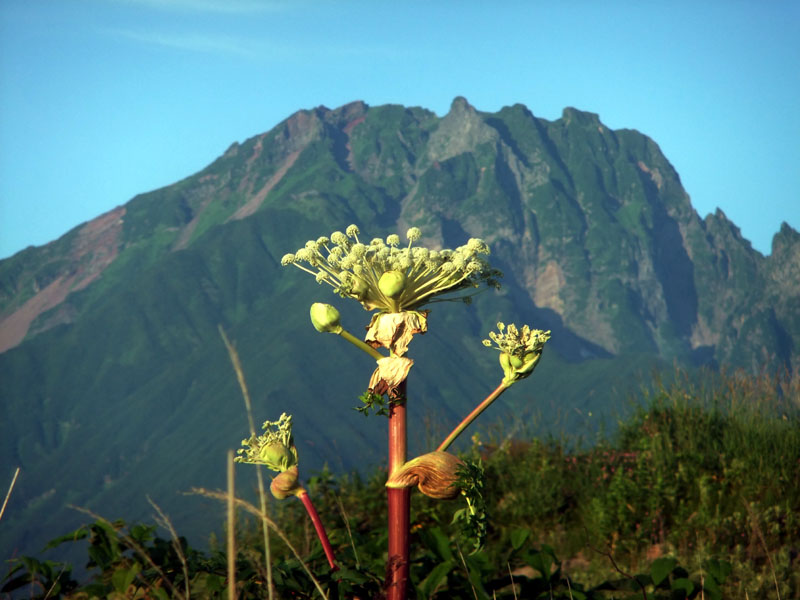
Ezo-nyuu – you see them in the grass fields and on roadside along the coastline of Rishiri Island. Because of their height, they stand out and are quite noticeable. This year more Ezo-nyuu than usual can be seen. I wonder if that is because of the hot days we had on the island in late June ? ~~~ Eiji Nishiya, FOM Rishiri, Japan – Mt. Rishiri in the background
Towering above the surrounding lush summer herb growth stands the hollow-stemmed monster known locally as Ezo nyuu (and to botanists as Angelica ursina – “bear’s angelica”). These plants appear at the height of summer, a potent reminder that the longest days are past and that, despite the heat, autumn is not far around the corner.
The umbel (flower head) of Angelica ursina has many small white flowers on thin stems attached to a main stalk. Their flowers fade in a matter of weeks, but their weathered, dried stems are strong and persist even into winter, when they rattle and buzz as the wind vibrates them, scattering their tiny seeds.
This tall perennial can be found in damp, cool places, along roadsides, around marshland edges and in sunny woodlands, wherever there is plenty of moisture. It grows in central and northern Japan, in China, and in areas of Russia surrounding the Sea of Okhotsk.
Whereas many members of the Angelica family may only grow to heights of between 50 cm and a meter, the bear’s angelica is a monster – the largest in the family – reaching a height of 3 to 3.5 meters!
Since he came ashore on or about July 1, 1848 – mid-summer – no doubt Ranald saw plenty of these giant Angelica ursina growing in the grass fields of Rishiri Island.

Photos by Eiji Nishiya, FOM Japan
~~~~~
Posted in Uncategorized | Comments Off on Ezo nyuu (Angelica ursina – “bear’s angelica”) of Rishiri
July 15th, 2010
150 years ago, the world had yet to discover Japan, and the people of Japan had never seen America …
In the summer of 1860, before the Civil War erased all thoughts of international affairs from America’s mind, the Japan’s Tokugawa government sent its first diplomatic mission to the United States: a group of 77 samurai whose purpose was to exchange the instruments of ratification of the Treaty of Amity and Commerce (1858). The agreement opened the ports of Edo and four other Japanese cities to American trade, among other stipulations. In the years before the Civil War, the Japanese visitors captivated the American people and the press.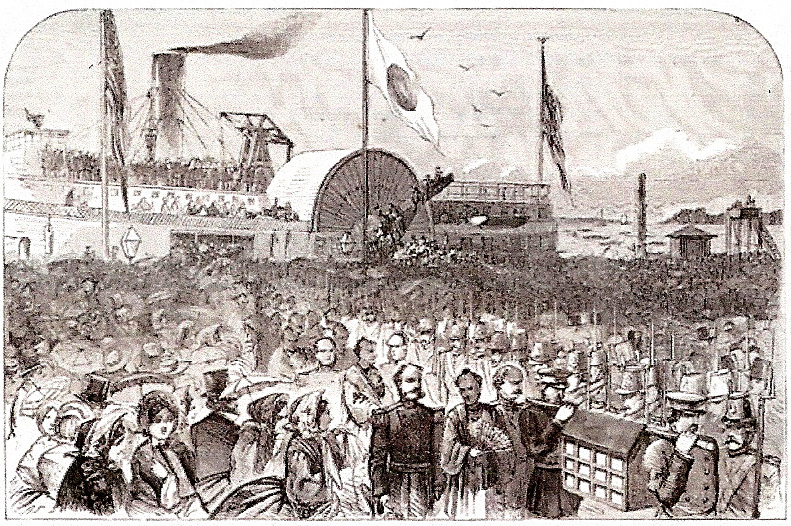 Landing of Japanese Embassy at Navy Yard in Washington, DC, May 1860 Landing of Japanese Embassy at Navy Yard in Washington, DC, May 1860
Throughout their seven-week tour, the guests from Japan were greeted with great excitement, if not outright curiosity given their “exotic” dress and demeanor. Everywhere they went, they were met by overflowing crowds, and impressive parades were staged in their honor. The historic visit was widely covered in the American press of the day, which relished recounting every detail of the visits made by these exotic visitors. In fact, these Japanese envoys from across the Pacific became celebrities who captivated much attention across a nation that had yet to experience the outbreak of the American Civil War. This remarkable encounter of cultures was described in the June 11, 1860 edition of The New York Times as “… an event which, if it have any significance at all, involves consequences the most momentous to the civilization and the commerce of the world for ages to come.”
USS Powhatan carrying the First Japanese Embassy to America, circa 1860. Woodblock print, ink and colors on paper. Asian Art Museum, San Francisco, CA (The U.S. frigate Powhatan was the so-called “Black Ship” formerly under the command of Commodore Perry)
This momentous event was not only a first for Japan, but for the West as well. Before the Japanese Embassy’s arrival on American shores, no Western country had ever received a diplomatic mission from East Asia. The significance of this great honor was not lost on the fledgling American republic. Congress adjourned for their arrival at the Navy Yard, while a crowd of 5,000 gathered to greet the samurai at the docks. Another 20,000 Washingtonians – Washington’s population at that time was about 75,000 – cheered along their route to the Willard Hotel, where the samurai would lodge during their stay. Men and boys climbed trees to get a better look as ladies tossed flowers from crowded, second-story windows.
Vice Envoy Muragaki described the scene in his private journal:
“What immense crowds there were! The streets were like seas of human beings; the windows and balconies were thronged with people eager to get a glimpse of the procession. I could not help smiling at the wonder in their eyes, which reached a culminating point when they caught sight of our party wearing costumes that they had never seen before or even dreamt of. I might say that the whole procession seemed to the people of Washington to be a scene out of fairyland, as, indeed, their city appeared to us.
It was however, not without a feeling of pride and satisfaction that we drove, in such grand style, through the streets of the American metropolis, as the first Ambassadors that Japan had ever sent abroad, and that we witnessed the enthusiastic welcome accorded to us by the citizens.”
Herman Melville called Japan “impenetrable” in Moby Dick (1851), and predicted that “(if) that double-bolted land, Japan, is even to become hospitable, it is the whale-ship alone to whom the credit will be due; for all ready she is on the threshold.” Less than three years later Commodore Perry’s steam-powered “Black Ships” [which included the U.S. frigate Powhatan] lowered their anchors in Edo Bay in 1853 and Japan’s official policy of national isolation, which had been followed for over two centuries, did indeed come to an end.
When I Googled “1860 Japanese ambassadors to America” over 90,300 results appeared. Of course I did not visit each and every website, but I did peruse the first four pages totaling just under 40 links. For Japanophiles the very idea that 90,000+ pages were devoted to one subject, e.g., the first Japanese embassy to visit America, is gratifying. For Friends of MacDonald members, however, the sparkles of delight are definitely muted; nearly every web article I inspected lovingly pointed out that Commodore Perry had “opened” Japan a mere 7 years before the official Japanese embassy visit, but none – NOT ONE – made mention of the fact that it had been Ranald MacDonald’s efforts – his design, if you will -that had facilitated the success of America’s first official contact with Japan, but Ranald had clearly articulated his intent, to wit:
“Wonder in an ocean of wonders! – to us, on its opposite shore, gazing, searching into the far, far offing, it was ever an object of intense curiosity. What of such people? What of their manner of life? What of their unrivalled(sic) wealth with its gleam of gold and things most precious? What of their life, social, municipal and national? What of their feelings and tendencies – if any – toward association or friendly relations with other people, especially us, neighbors of their East?
These and such like questions and considerations ever recurring; the subject, oft, of talk amongst my elders … entering deeply into my young and naturally receptive mind; breeding, in their own way, thoughts and aspirations which dominated me as a soul possessed. I resolved, within myself, to personally solve the mystery, if possible, at any cost of effort – yea, even life itself.
Satisfied in my own conscience with my purpose, I never abandoned it. That purpose was to learn of them; and, if occasion should offer it, to instruct them of us.” ~~ Ranald MacDonald, The Narrative of His Life, 1824-1894; pg.131 (annotated and edited by Wm. Lewis & N. Murakami)
And so he did. And if Ranald had not had the opportunity – and the audacity – to instruct several, bright Japanese students in the complexities of the English language – among them the Emperor’s eventual chief interpreter to Commodore Perry, Einosuke Moriyama – who knows how America’s initial foray into Japan would have turned out?
***
Posted in Uncategorized | Comments Off on Samurai in Washington D.C.
July 11th, 2010
The day was fair, the turn-out was gratifying and the conversation lively at the annual membership meeting of the Friends of MacDonald held in Astoria, OR over the weekend. We greeted many old friends and welcomed several new members while enjoying a delicious lunch at the “Baked Alaska” restaurant (shameless plug) on the waterfront overlooking the wide mouth of the Columbia River and the blue-green hills of Cape Disappointment and Chief Comcomly’s Chinook territory in Washington — the same view eyed by the likes of Meriwether Lewis and William Clark in 1805-06 as well as Ranald’s father, Archibald McDonald in November of 1821, the year he arrived at (then) Fort George.

We were honored to welcome Consul General of Japan in Portland, Takamichi Okabe and his wife, Kozue. According to Richard Read of the Oregonian newspaper, Mr. Okabe spent three months in Baghdad as an involuntary “guest” of Saddam Hussein during 1990, when Iraqi forces invaded Kuwait. [He had been serving as first secretary in Japan’s embassy in Kuwait.] During his next foreign assignment – in Kenya – Mr. Okabe and a colleague braved warfare in Somalia to investigate opportunities for humanitarian aid there. Later in Nepal, Mr. Okabe was posted in Kathmandu when members of the royal family were massacred at the palace. Most recently Mr. Okabe served four years as Consul General of Japan in Auckland, New Zealand. In Portland, he is joined by his wife, Kozue, and we all hope that Mr. and Mrs. Okabe will have the opportunity to enjoy the peace and beauty of the Pacific Northwest.
FOM was happy that Mac Burns, Executive Director of CCHS was able to take time away from his busy schedule to attend the meeting. Mac, who was fresh off the “Goonies 25th Anniversary” celebration the week before, noted that over 100 Goonies fans showed up for the grand opening of the Oregon Film Museum in Astoria the previous Saturday, and mentioned that people had come from all over — France, Japan, and from across the United States. Mac also passed out buttons and other information about the upcoming “Astoria 1811-2011 Bicentennial Celebration” happening next year. A link to that website can be found here: http://www.astoria200.org/ . If you have never visited Astoria, FOM encourages you to do so – it is a sleepy little coastal town with a lot of secrets and surprises, not to mention a rich history. Executive Director of CCHS was able to take time away from his busy schedule to attend the meeting. Mac, who was fresh off the “Goonies 25th Anniversary” celebration the week before, noted that over 100 Goonies fans showed up for the grand opening of the Oregon Film Museum in Astoria the previous Saturday, and mentioned that people had come from all over — France, Japan, and from across the United States. Mac also passed out buttons and other information about the upcoming “Astoria 1811-2011 Bicentennial Celebration” happening next year. A link to that website can be found here: http://www.astoria200.org/ . If you have never visited Astoria, FOM encourages you to do so – it is a sleepy little coastal town with a lot of secrets and surprises, not to mention a rich history.
Mr. Tadakazu Kumashiro, Charter Member of the Friends of MacDonald, was also in attendance. After his retirement, Mr. Kumashiro, or “Kuma” (the Bear) as he likes to be called, joined the Peace Corps in 2001 and was stationed in Namibia for a couple of years working for the Namibian government where he promoted AIDS education by visiting schools. Kuma-san gave talks to students, teachers and school principals about what they should be doing to prevent an AIDS pandemic. Kuma-san reports that he had to be hospitalized himself four times while he was there – probably, he noted, because of the unfamiliar germs he encountered. Mr. Kumashiro rather depreciatingly says he thinks he became ill because of his “old age” – he was 67-69 at the time – but having met him myself I have to say he is one of the most vigorous and energetic “seniors” I have ever met [both mentally and physically].
A big “thank you” to Jim Mockford for bringing his laptop so the group could access the new web page. It was the first time most of the FOM members had seen it (we hope it won’t be the last time!) We all appreciated that the Baked Alaska staff worked so hard to make sure their wireless network was workable for us. And we missed the presence of Bruce Berney, who was back in Portland celebrating his grandson’s birthday.
During the meeting an interesting, if not recurring, question was presented by Consul General Okabe, e.g., what was the status of Ranald MacDonald’s “citizenship” at the time of his landing on Rishiri Island in 1848? A second comment [also in the form of a question] was presented by Mr. Okabe and was definitely food for thought – was Ranald MacDonald really the first teacher of English in Japan?
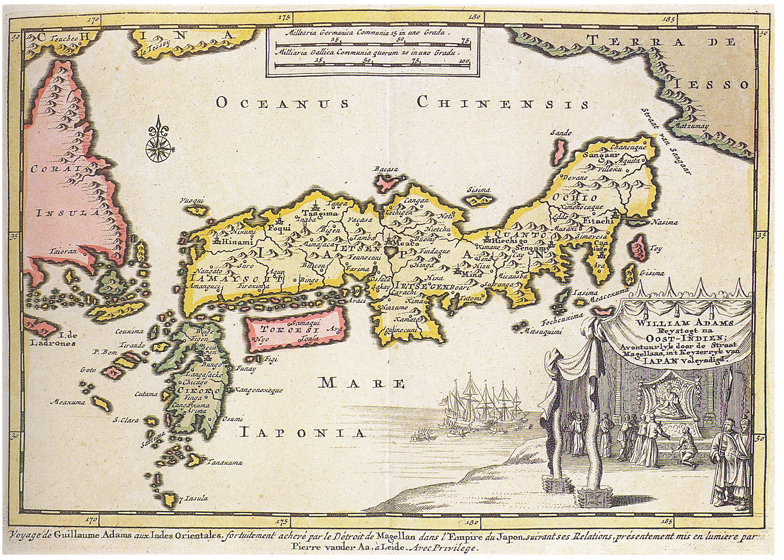 Map of Japan drawn by William Adams, circa 1600 Map of Japan drawn by William Adams, circa 1600
The Consul General’s second question referred to one William Adams, who, as the British pilot major of the Dutch trading ship Liefde (“Love” or “Charity”) landed off the island of Kyushu in April 1600. [The true story of Will Adams was the basis of the romantic novel Shogun, written by James Clavell and published in 1975; Adams’ adventures were also documented in the historical novel Daishi-san written by Robert Lund in 1961.] According to one source “ … soon after Adams’ arrival in Japan, he became a key advisor to the shogun Tokugawa Ieyasu and built for him Japan’s first Western-style ships. Adams was later the key player in the establishment of trading factories (in Japan) by the Netherlands and England. He died in Japan at age 55, and has been recognized as one of the most influential foreigners in Japan during this period.”
William Adams – known in Japan as Miura Anjin – may have been the first Englishman [Briton] to set foot in Japan; from historical information [including writings from Adams’ own journal] it seems likely that it was the Anjin who needed an interpreter [the ever-present Portuguese Jesuits, in this case] to make himself understood. Prudence dictates that circumstances – and the Japanese people – taught their language to Will Adams, rather than the other way around.
Regarding Ranald MacDonald being the firs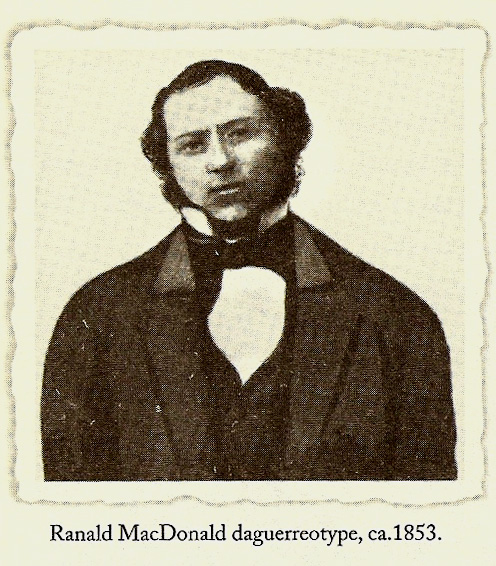 t American to “set foot in Japan” [the way Will Adams was the first Englishman to do so] we know this just isn’t so. There were Americans who had visited Nagasaki while in the service of the Dutch during the late 1700’s. In the mid-1800’s there were scores of American whaling ships in the Sea of Japan, and historical record tells of some crew members that had either been shipwrecked off the Japanese coast or had deserted their vessel to seek their fortunes ashore. As far as is known, however, Ranald MacDonald was the first American to intentionally go to Japan for the express purpose of learning about the Japanese people and their language and to teach English to them, and to perhaps ‘work’ as an interpreter. As to the question of Ranald’s citizenship, regardless of the fact that Fort George was under a British flag in 1824, it cannot be denied that half of Ranald’s DNA came from a Chinook Indian mother, a fact that made him a truer “American” than any geographical accident of birth. Later in his life, through both choice and residence, MacDonald became sufficiently “American” enough to justify that we may say that Ranald MacDonald was the first American to leave his mark upon the people and the nation of Japan, and the first native-English-speaking individual to teach the English language there. t American to “set foot in Japan” [the way Will Adams was the first Englishman to do so] we know this just isn’t so. There were Americans who had visited Nagasaki while in the service of the Dutch during the late 1700’s. In the mid-1800’s there were scores of American whaling ships in the Sea of Japan, and historical record tells of some crew members that had either been shipwrecked off the Japanese coast or had deserted their vessel to seek their fortunes ashore. As far as is known, however, Ranald MacDonald was the first American to intentionally go to Japan for the express purpose of learning about the Japanese people and their language and to teach English to them, and to perhaps ‘work’ as an interpreter. As to the question of Ranald’s citizenship, regardless of the fact that Fort George was under a British flag in 1824, it cannot be denied that half of Ranald’s DNA came from a Chinook Indian mother, a fact that made him a truer “American” than any geographical accident of birth. Later in his life, through both choice and residence, MacDonald became sufficiently “American” enough to justify that we may say that Ranald MacDonald was the first American to leave his mark upon the people and the nation of Japan, and the first native-English-speaking individual to teach the English language there.
***
Posted in Uncategorized | Comments Off on July 2010 ~ FOM Annual Meeting
June 14th, 2010
朝の通勤途中で道路際に咲く紫のチシマフウロを見つけた。4月はじめの花は瀬の低い花たち。6月になると野の草の背丈が高くなるので花たちも背の高い花が咲く。チシマフウロの群落から、それを撮るかなどと、楽しみながらカメラを向ける。

On my way to work I found clumps of purple Chishima Fuuro [Geranium erianthum] on the road side. In early April they are relatively short plants, but by the time June comes the wild grasses are growing much taller, and the Chishima Fuuro, not to be outdone, grows taller as well. For several moments I concentrate on which flowers to photograph, forgetting that time is passing while I make up my mind.
~photo by Eiji Nishiya,Rishiri Island, FOM Japan
Posted in Uncategorized | Comments Off on Rishiri Island Wildflowers
June 14th, 2010
~~~ excerpt from Gates Ajar, Summer 1993, Fifth Anniversary Edition
When Ranald MacDonald died in 1894, whispering “Sayonara”, the Japanese word for farewell, he had spent less than 10 months of his life within the bristling island fortress that was mid-19th century Japan. Consideration should therefore be given the other 822 months which made up Ranald’s adventure-laden 70 years. He spent his first 10 years at the rugged Pacific Northwest outposts of the Hudson’s Bay Company; then five years at school at Red River; a dozen years at sea (with time out in Japan and the Australian gold fields); and some 30 years in Canada before returning to Fort Colville, Washington Territory, in 1882.
During the three Canadian decades, Ranald ranched, mined, ran a ferry, ran pack trains, explored . . .
Ranald MacDonald also secured permission from the government of British Columbia to build a 200-mile toll road (a cent and a half a pound for all goods transported, a half-dollar per head for cattle) for pack trains from the Bella Coola inlet on North Bentinck Arm to the Fraser River, and a steamer connection to the Cariboo gold fields. Ranald’s half-brother, Benjamin, thought “capitalists of San Francisco” were involved in the project.
The sophisticated prospectus signed by Ranald and his partner, John Barnston, deserves our attention. Certainly Ranald must have played a key role in creating the prospectus, based as it was upon both a careful exploration of the proposed route and a thorough-going knowledge of the requirements of miners during a gold rush. In a report he points out that the town site at the head of the inlet had a safe harbor, superior timber, fisheries, nearby copper deposits, and agricultural potential.
In the prospectus, the technique with which hot buttons are pushed would do credit to a good marketing vice president today. It points out that, compared with contemporary Douglas and Lillooette routes, the proposed road would save 158 miles, cut almost a quarter the “transhipments (sic) and detentions” costing miners time and money, save passengers at least 12 days, land goods 10 to 15 days earlier . . .
Unfortunately, the estimated gain of $66,000 in the first six months may have failed to materialize. ” . . . Ranald’s grant was small, simply for a pack trail,” Benjamin recalled, and someone more influential persuaded the government into building a wagon road. Ranald finally built a trail but never got a steamer connection. He had a few things shipped in but the wagon road took all the business”.
It seems likely that the “wagon road” which so blighted Ranald’s hopes was the Cariboo Wagon Road (now part of the trans-Canada Highway) supported by British Columbia Governor James Douglas, who said he wanted to secure “the whole trade of the colony for Fraser’s River” and prevent “all attempts at competition from Oregon”.
~~ Barbara Peeples. Sources: Prospectus on file in the Provincial Archives of British Columbia; books: Ranald MacDonald: The Narrative of His life, 1824-1894; The Great Northwest, by Oscar Osburn-Winther; Caesars of the Wilderness, by Peter C. Newman; Benjamin’s narrative, from Jean Murray Cole’s family collection.
Posted in Uncategorized | Comments Off on An Extraordinary Marketing Man . . .
May 30th, 2010
~reprinted from Gates Ajar, Spring 1992
Almost (120) years ago, Ranald MacDonald took pen in hand to correct an article in the Spokane (Washington) Review. He sent his correction, however, [not to the Spokane Review but] to his local newspaper, The Kettle Falls Pioneer, where it won front page coverage on May 12, 1892. This ‘letter to the editor’ revealed something of Ranald’s style (concerned historians will note that Ranald added his own disclaimer.) The column was headed: “HISTORIC APPLE TREES, A Few Facts Penned by Mr. Ranald MacDonald”.
Here is a portion of the “offending” story Ranald felt compelled to refute:
“The Washington State Historical Society is doing very valuable work, and has much more to do. Among other things demanding its attention should be the removal to one of the public parks in Tacoma of those two old historic apple trees now growing at old Fort Nisqually. Those threes are the first apple trees planted in the northwest, at least north of the Columbia. On November 1, 1834 it was planted in a hotbed by Archie McDonald. Nicknamed “Sleepy” McDonald, and the following spring the twigs were transplanted to the ground where they now stand at old Fort Nisqually. McDonald was one of the chief clerks of the Hudson Bay Company, and was sent from Vancouver by the good Dr. McLaughlin to found Fort Nisqually. In England in 1833 the captain of an English ship was given a grand dinner on the eve of his departure for the wild wilderness of the northwest. In eating an apple a lady carefully saved its seeds, presented them to the captain, and requested him to have them planted in the new world. These were the seeds planted at old Fort Nisqually. The two trees they produced stand about a mile off the main road between Tacoma and Olympia, the location of Nisqually having been changed from its original site …” ~Spokane Review
And so Ranald wrote:
“OLD FORT COLVILLE
MARCUS P.O., WASH.
EDITOR PIONEER: –The above interesting paragraph, having the ring and spice of romance, I fear will not bear the cold facts of history. I will be brief: Mr. Archibald MacDonald, stationed at Fort Langley on the Fraser River, received his parchment or commission while there; was then assigned to Fort Colville; the family, I believe, left Langley in 1833 in a bateau to reach Colville for the second time; coasted down Puget Sound, going ashore every night to camp; in due course arrived at Nisqually and camped on the beach at the mouth of a creek which I suppose to be the Sequalichew; here we laid over, Mr. MacDonald, inspecting the country. I remember (him) taking me and a younger brother to view the beautiful, park-like country covered with green and luxuriant grasses, and remember him saying is was just the country for cattle and sheep, and pointing to the running stream that could be utilized for milling purposes … Then Mr. MacDonald and the late Sir James Douglas and party was sent to build Fort Nisqually … with a view of making it the headquarters of the future Puget Sound Agricultural Company …
I have never heard Mr. Archie MacDonald called “Sleepy” or nicknamed; if so he must have slept with one eye open, for he was quick to see, act with energy and prompt to execute. The mistake may arise from the fact that there were three Angus MacDonalds – one was called ‘Sleepy’, one ‘Holey’, and the other ‘Glencoe’ – this I have been credibly informed by satisfactory evidence now living; but this was a long time after the founding of Nisqually, so this Sleepy McDonald could not be connected with the “Historic Apple Trees”.
The first apple trees planted and bearing fruit was at old Fort Vancouver north of the Columbia (river), where the Hudson Bay Company had a large garden under the care and management of a careful and intelligent Scotsman by the name of Mr. Bruce, who sometimes would cut an apple and give the boys a taste …
What I have some doubt is with respect to dates not having the journals by me, but note this from memory.
~RANALD MacDONALD, a Pro-Pioneer”
[Editor’s note: Although specific details vary, the story of apple seeds traveling from a London dinner party to Fort Vancouver is a well-known story. Vancouver’s “Old Apple Tree” still stands today and bears fruit, as it has for more than 150 years (more than 170 years to date!), not far from the site of the restored Fort Vancouver on the Columbia River.]
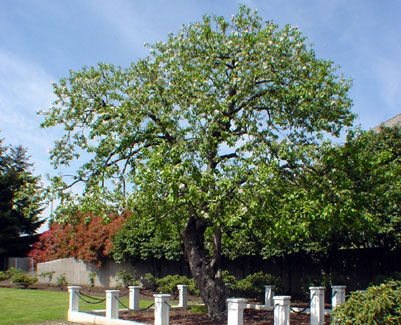
The annual Old Apple Tree Festival is typically held on the first Saturday in October from 10 a.m. to 2 p.m. at the Old Apple Tree Park, located on Columbia Way, just east of Interstate 5 Bridge. The festival focuses on environmental education and historic preservation with Heritage Tree walks, Historic Clark County tours, Birds of Prey show, scavenger hunts along the waterfront trail, kids’ activities, and much more. As a bonus, the Urban Forestry Commission gives away state-grown apples, as well as tree cuttings from the Old Apple Tree to each visitor.
Posted in Uncategorized | Comments Off on Apple Blossom Time, 100 Years Ago
May 2nd, 2010
Skunk Cabbage, or “mizu bashou” in Japanese, is a harbinger of spring in Japan and is much-loved by Japanese people. This photo was taken on Rishiri Island, late-April, 2010.
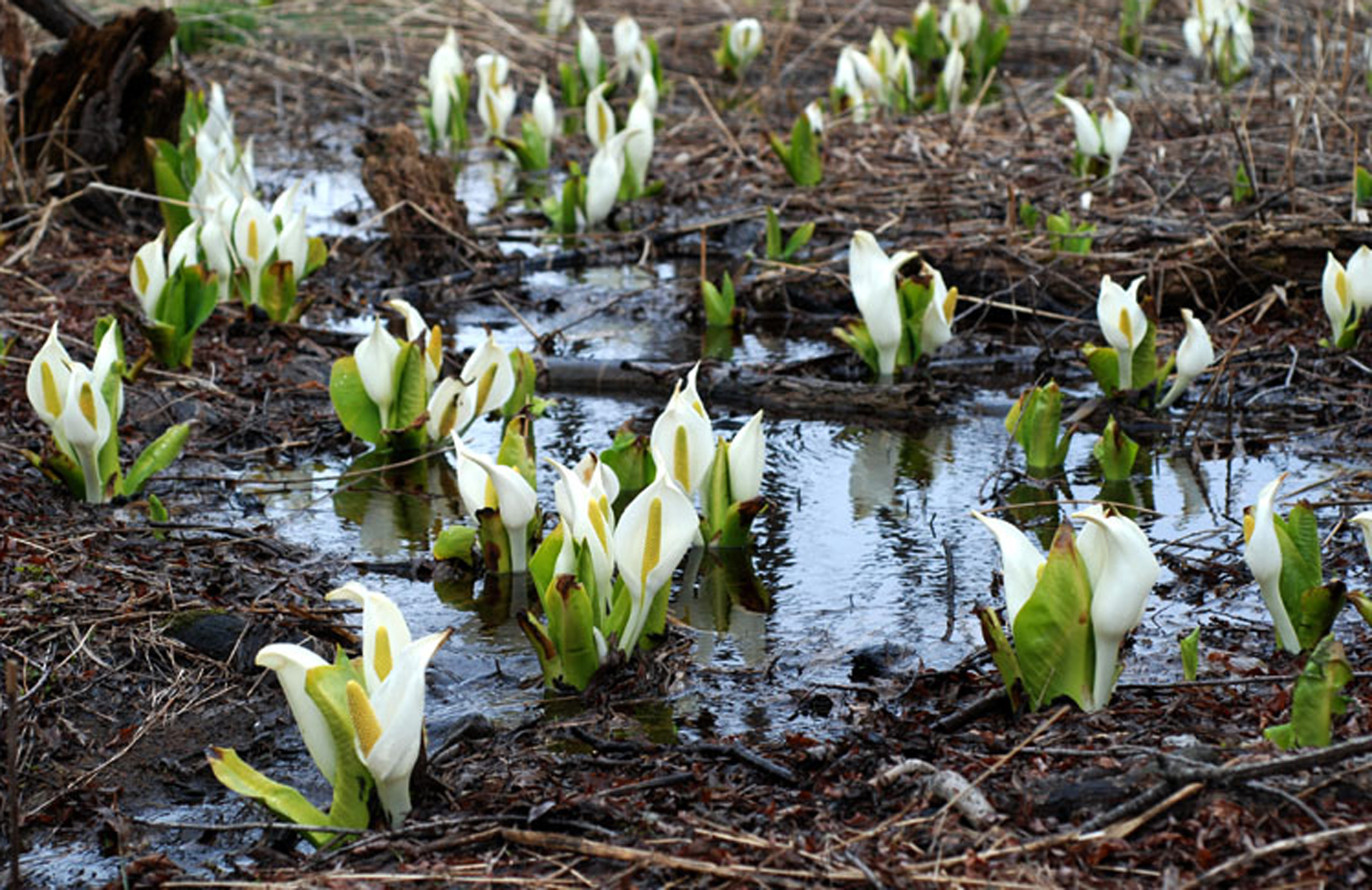
photo by Eiji Nishiya, FOM Japan ~~ Rishiri Island
Posted in Uncategorized | Comments Off on Mizu Bashou
April 30th, 2010
アメリカ大陸に最初に足跡を残した日本人は誰?・・・という事は、アメリカ大陸に立った最初の日本人は誰?・・・という質問になる。 多くのお方は土佐藩(今の高知県)出身の中浜 万次郎こと、ジョン・万次郎と答えるであろう。 それは1841年の出来事であった。 しかし、史実はこれを正解としない。 実はその7年前の1834年、愛知県知多郡小野浦から三吉と呼ばれる三人の船乗り(音吉、岩吉、久吉)が今のワシントン州オリンピック半島の海岸、ケープ・アラバに漂着しているのである。
1832年11月3日、三吉たち14人を乗せた千石船、宝順丸は米や陶器を積み込み、目的 地江戸へ向かって伊勢湾の鳥羽を出港した。しかし、その途中遠州灘で暴風雨に遭い、宝順丸の舵が折れ航路コントロールが不可能となる。14ヶ月間と言う長期にわたり太平洋上を漂流の末、宝順丸はやがてケープ・アラバに漂着したのであった。当初14人居た乗り組み員は、途中、飢餓や壊血病で倒れ、生き残ったのは音吉、岩吉、久吉の三人だけになってしまった。三人はそこで捕鯨部族として知られていたマカー・インディアンに救助され今で言う“ホーム・ステイ”を4ヶ月余体験、健康を回復した。その後、三吉達は、コロンビア河向こうのバンクーバーに在る(現在の国立史跡公園)フォート・バンクーバーへ連れて来られ、そこで約13ヶ月間過ごし英語のレッスンを受け、やがて英国経由鎖国令の布かれている日本へ・・・の送還を試みられるのである。【この史実、特に音吉の歩んだ道はこの後意外な展開を遂げる。ご興味をお持ちのお方は角川文庫の三浦綾子著“海嶺”をご一読されたい。】
さて、アメリカへ来た最初の日本人は誰だったかご理解頂いたと思うので、次に逆の質問、所謂、(日本行きを目的とし)日本へ最初に行ったアメリカ人は誰?・・・と、問うて見たい。
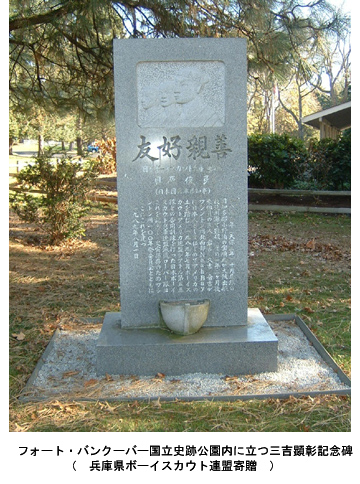 1853年、時の徳川幕府に「開国!」を迫り黒船を率いて浦賀港へやってきたペリー提督・・・? 答えは「No!」 正解はラナルド・マクドナルド(当時24歳)。 更に、驚く無かれ、彼はオレゴニアンであった。ラナルドは、コロンビア河の河口、アストリアのフォート・ジョージで1824年2月3日、スコットランド人アーチボルド・マクドナルドを父に、コロンビア下流地帯のインディアン、チヌーク族の大酋長コム・コムリの次女コアール・クソアを母として産声を上げた。ラナルドは、少年時代にフォート・バンクーバーに滞在していた日本人、三吉達の瞳、髪の毛、皮膚の色等、インディアンに似ているという話を聞き、(別な説は、少年ラナルドが三吉達を見た・・・とか、三吉達と短期間ではあったが交流の機会があった・・・とも言われているが、その史実は疑わしい)又、インディアン部族の長老間で、先祖達がアジアからアラスカを経てアメリカ大陸へやってきたという言い伝えを耳にした事もあった事から、彼らインディアンと日本人の先祖は同じかもしれない・・・と、少年ラナルドは日本、日本人に対する異常なほどの興味と憧れを抱き始めた。 1853年、時の徳川幕府に「開国!」を迫り黒船を率いて浦賀港へやってきたペリー提督・・・? 答えは「No!」 正解はラナルド・マクドナルド(当時24歳)。 更に、驚く無かれ、彼はオレゴニアンであった。ラナルドは、コロンビア河の河口、アストリアのフォート・ジョージで1824年2月3日、スコットランド人アーチボルド・マクドナルドを父に、コロンビア下流地帯のインディアン、チヌーク族の大酋長コム・コムリの次女コアール・クソアを母として産声を上げた。ラナルドは、少年時代にフォート・バンクーバーに滞在していた日本人、三吉達の瞳、髪の毛、皮膚の色等、インディアンに似ているという話を聞き、(別な説は、少年ラナルドが三吉達を見た・・・とか、三吉達と短期間ではあったが交流の機会があった・・・とも言われているが、その史実は疑わしい)又、インディアン部族の長老間で、先祖達がアジアからアラスカを経てアメリカ大陸へやってきたという言い伝えを耳にした事もあった事から、彼らインディアンと日本人の先祖は同じかもしれない・・・と、少年ラナルドは日本、日本人に対する異常なほどの興味と憧れを抱き始めた。
1847年暮、23歳に成長したラナルドはハワイでアメリカの捕鯨船プリマス号の平船員となり、捕鯨船が世界中から集まっていた日本近海への出港の第一関門をクリアした。その後数ヶ月間、類の無いほどの大漁獲を収めたプリマス号での捕鯨の仕事に汗を流したラナルドは、報酬の代わりに小船と食料、水を事前約束通りエドワード船長から譲り受け、いよいよ単身日本上陸を目指すのであった。 それは1848年、ラナルドが満24歳の時であった。
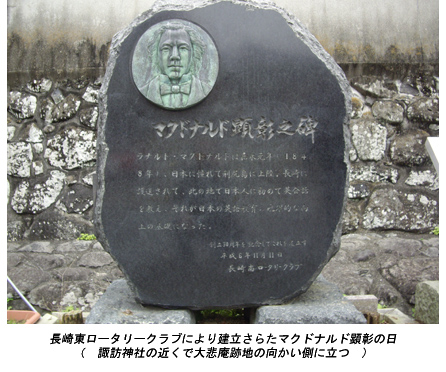
彼は、鎖国令が布かれている日本に上陸するのは、命がけである事は十分承知していた。少しでもその危険性を和らげる為、ラナルドは万国共通の“人情”に訴える作戦に出た。 北海道利尻島の海辺の村落、野塚に近付いた海上で遭難を偽装したのだ。その作戦は見事功を奏し、案の定、海岸に居たアイヌ達が2艘の小船で救助に来てくれた。
こうして、オレゴニアンのラナルド・マクドナルドは鎖国中の日本への入国を果たした。だが、オランダ人と中国人、それも長崎の出島以外では交易を認めていなかった徳川幕府としては、ラナルドを密入国者として捕らえ約3ヶ月間掛け、船で身柄を長崎へ送り、そこの大悲庵と称する座敷牢に軟禁した。しかし、ラナルドの日本人や日本文化に対する尊敬の念と日本語を学ぼうとする誠意溢れる人柄が役人に認められ、出島のオランダ語専門通詞達14人が、大悲庵に通うようになった。そこで通詞達は彼に日本語を教え、彼から英語を学ぶ・・・という日常が始まったのだ。これは、ラナルドがアメリカへ強制送還されるまでの約7ヶ月間続いた。
これが日本での英語教育のはじまり・・・であり、現在ではオレゴン出身のラナルド・マクドナルドが“日本で最初の英語教師”として位置付けされている。 更に、その5年後、1853年にペリー提督が黒船を率いて徳川幕府に開国を迫る交渉に来る訳だが、その時日本側の首席通訳の大任を果たした森山 栄之助は、マクドナルドの大悲庵に通った14人の通詞の一人であった。
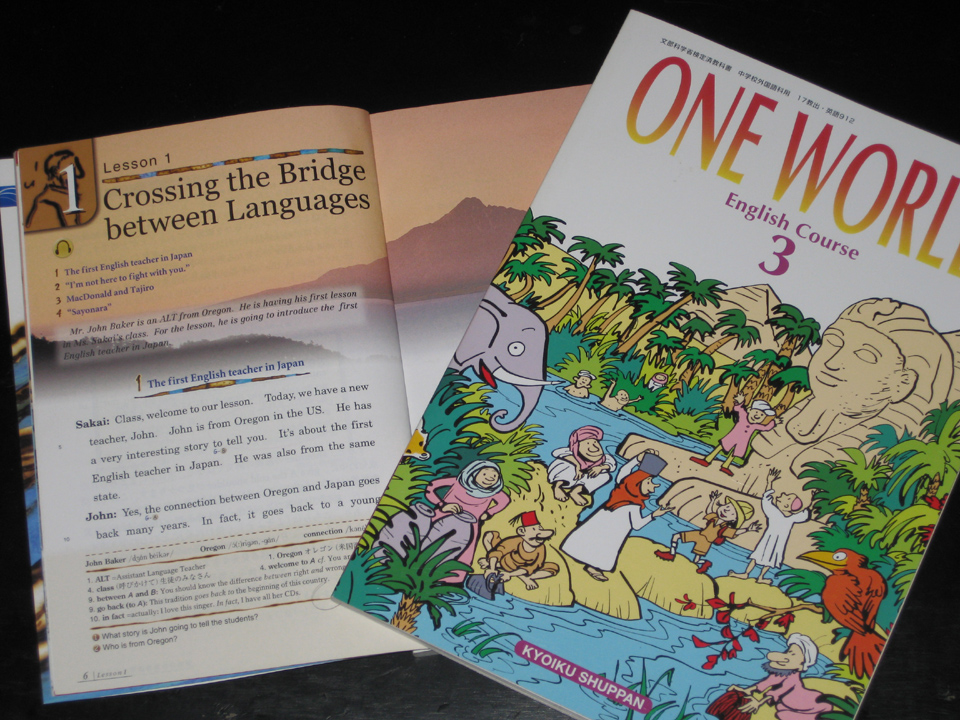
【 このマクドナルドに関する史実は、近年日本の中学及び高校の英語教科書でも教材の一部として取り上げられているばかりか、日・英両語で幾つかの本が出版されている。 その中で最も代表的な日本語の本は、文春文庫の吉村 昭著“海の祭礼”であろう。】
ここにラナルドが日本(大悲庵)で密かに纏めた和英語彙集の中から、幾つかを紹介する。ここで留意しなくてはならないのは、マクドナルドは、彼が耳にした日本語を英語の言葉の発音に置き換えて彼なりにメモした事である。所謂、ローマ字発音にこだわると、マクドナルドが意図した発音と異なるケースが多々あるので気を付けなければならない。 例えば、meme であるが、ローマ字発音ではメメとなる。しかし、マクドナルドが意図した発音はミミ〔耳〕なのである。英語でme〔私〕という単語があるが、マクドナルドが聞いた日本語はミミ、即ちme ミーを二度繰り返したmeme ミーミー(耳) であった。Keno も同様に、ローマ字発音ではヶノであるが、マクドナルドが聴いた言葉は、キノ、すなわちキノー(昨日)だったのである。 基本的に、eの発音は、エ ではなく英語ではイー。 アルファベットは A・B・C・D・E・F・・・と続くが、これは、エイ・ビー・シー・ディー・イー・エフ・・・と、発音するのはご存知の通り。
catana – 刀: sword
meme – 耳: ear
oy – 甥: nephew
nom – 飲む: drink
omereto – おめでとう: congratulations
beging – 美人: beautiful lady
sheo – 塩: salt
keno – きのう: yesterday
emoto – 妹: younger sister
sinara – さいなら: good bye
rogin – 老人: old man
eye-nose – アイヌ: Ainu
oboyewarii – 覚え悪りい: forgetful (bad at remembering)
この他にも簡単な日本語(長崎弁)会話を含んだマクドナルド自身による手書きの語彙集の現物は、カナダのヴィクトリアB.C.図書館に保管されている。
マクドナルド友の会* 会長 谷田部 勝
*マクドナルド友の会は、より多くの方々にラナルド・マクドナルドに関する素晴らしい史実を知ってもらおうとの主旨から、今から21年前、当時ポートランド商工会理事であり、エプソン・ポートランド社社長であった故冨田 正勝氏等が中心となり、クラッツァップ郡歴史協会の下部組織として創設されたものである。
Posted in Uncategorized | Comments Off on 日本へ最初に行ったアメリカ人は誰?
|
 |
|
 Harvesting Konbu. (Photo by E. Nishiya.)
Harvesting Konbu. (Photo by E. Nishiya.)






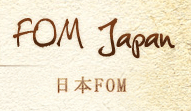


 Landing of Japanese Embassy at Navy Yard in Washington, DC, May 1860
Landing of Japanese Embassy at Navy Yard in Washington, DC, May 1860 

 Executive Director of CCHS was able to take time away from his busy schedule to attend the meeting. Mac, who was fresh off the “Goonies 25th Anniversary” celebration the week before, noted that over 100 Goonies fans showed up for the grand opening of the Oregon Film Museum in Astoria the previous Saturday, and mentioned that people had come from all over — France, Japan, and from across the United States. Mac also passed out buttons and other information about the upcoming “Astoria 1811-2011 Bicentennial Celebration” happening next year. A link to that website can be found here:
Executive Director of CCHS was able to take time away from his busy schedule to attend the meeting. Mac, who was fresh off the “Goonies 25th Anniversary” celebration the week before, noted that over 100 Goonies fans showed up for the grand opening of the Oregon Film Museum in Astoria the previous Saturday, and mentioned that people had come from all over — France, Japan, and from across the United States. Mac also passed out buttons and other information about the upcoming “Astoria 1811-2011 Bicentennial Celebration” happening next year. A link to that website can be found here:  Map of Japan drawn by William Adams, circa 1600
Map of Japan drawn by William Adams, circa 1600 t American to “set foot in Japan” [the way Will Adams was the first Englishman to do so] we know this just isn’t so. There were Americans who had visited Nagasaki while in the service of the Dutch during the late 1700’s. In the mid-1800’s there were scores of American whaling ships in the Sea of Japan, and historical record tells of some crew members that had either been shipwrecked off the Japanese coast or had deserted their vessel to seek their fortunes ashore. As far as is known, however, Ranald MacDonald was the first American to intentionally go to Japan for the express purpose of learning about the Japanese people and their language and to teach English to them, and to perhaps ‘work’ as an interpreter. As to the question of Ranald’s citizenship, regardless of the fact that Fort George was under a British flag in 1824, it cannot be denied that half of Ranald’s DNA came from a Chinook Indian mother, a fact that made him a truer “American” than any geographical accident of birth. Later in his life, through both choice and residence, MacDonald became sufficiently “American” enough to justify that we may say that Ranald MacDonald was the first American to leave his mark upon the people and the nation of Japan, and the first native-English-speaking individual to teach the English language there.
t American to “set foot in Japan” [the way Will Adams was the first Englishman to do so] we know this just isn’t so. There were Americans who had visited Nagasaki while in the service of the Dutch during the late 1700’s. In the mid-1800’s there were scores of American whaling ships in the Sea of Japan, and historical record tells of some crew members that had either been shipwrecked off the Japanese coast or had deserted their vessel to seek their fortunes ashore. As far as is known, however, Ranald MacDonald was the first American to intentionally go to Japan for the express purpose of learning about the Japanese people and their language and to teach English to them, and to perhaps ‘work’ as an interpreter. As to the question of Ranald’s citizenship, regardless of the fact that Fort George was under a British flag in 1824, it cannot be denied that half of Ranald’s DNA came from a Chinook Indian mother, a fact that made him a truer “American” than any geographical accident of birth. Later in his life, through both choice and residence, MacDonald became sufficiently “American” enough to justify that we may say that Ranald MacDonald was the first American to leave his mark upon the people and the nation of Japan, and the first native-English-speaking individual to teach the English language there.


 1853年、時の徳川幕府に「開国!」を迫り黒船を率いて浦賀港へやってきたペリー提督・・・? 答えは「No!」 正解はラナルド・マクドナルド(当時24歳)。 更に、驚く無かれ、彼はオレゴニアンであった。ラナルドは、コロンビア河の河口、アストリアのフォート・ジョージで1824年2月3日、スコットランド人アーチボルド・マクドナルドを父に、コロンビア下流地帯のインディアン、チヌーク族の大酋長コム・コムリの次女コアール・クソアを母として産声を上げた。ラナルドは、少年時代にフォート・バンクーバーに滞在していた日本人、三吉達の瞳、髪の毛、皮膚の色等、インディアンに似ているという話を聞き、(別な説は、少年ラナルドが三吉達を見た・・・とか、三吉達と短期間ではあったが交流の機会があった・・・とも言われているが、その史実は疑わしい)又、インディアン部族の長老間で、先祖達がアジアからアラスカを経てアメリカ大陸へやってきたという言い伝えを耳にした事もあった事から、彼らインディアンと日本人の先祖は同じかもしれない・・・と、少年ラナルドは日本、日本人に対する異常なほどの興味と憧れを抱き始めた。
1853年、時の徳川幕府に「開国!」を迫り黒船を率いて浦賀港へやってきたペリー提督・・・? 答えは「No!」 正解はラナルド・マクドナルド(当時24歳)。 更に、驚く無かれ、彼はオレゴニアンであった。ラナルドは、コロンビア河の河口、アストリアのフォート・ジョージで1824年2月3日、スコットランド人アーチボルド・マクドナルドを父に、コロンビア下流地帯のインディアン、チヌーク族の大酋長コム・コムリの次女コアール・クソアを母として産声を上げた。ラナルドは、少年時代にフォート・バンクーバーに滞在していた日本人、三吉達の瞳、髪の毛、皮膚の色等、インディアンに似ているという話を聞き、(別な説は、少年ラナルドが三吉達を見た・・・とか、三吉達と短期間ではあったが交流の機会があった・・・とも言われているが、その史実は疑わしい)又、インディアン部族の長老間で、先祖達がアジアからアラスカを経てアメリカ大陸へやってきたという言い伝えを耳にした事もあった事から、彼らインディアンと日本人の先祖は同じかもしれない・・・と、少年ラナルドは日本、日本人に対する異常なほどの興味と憧れを抱き始めた。


